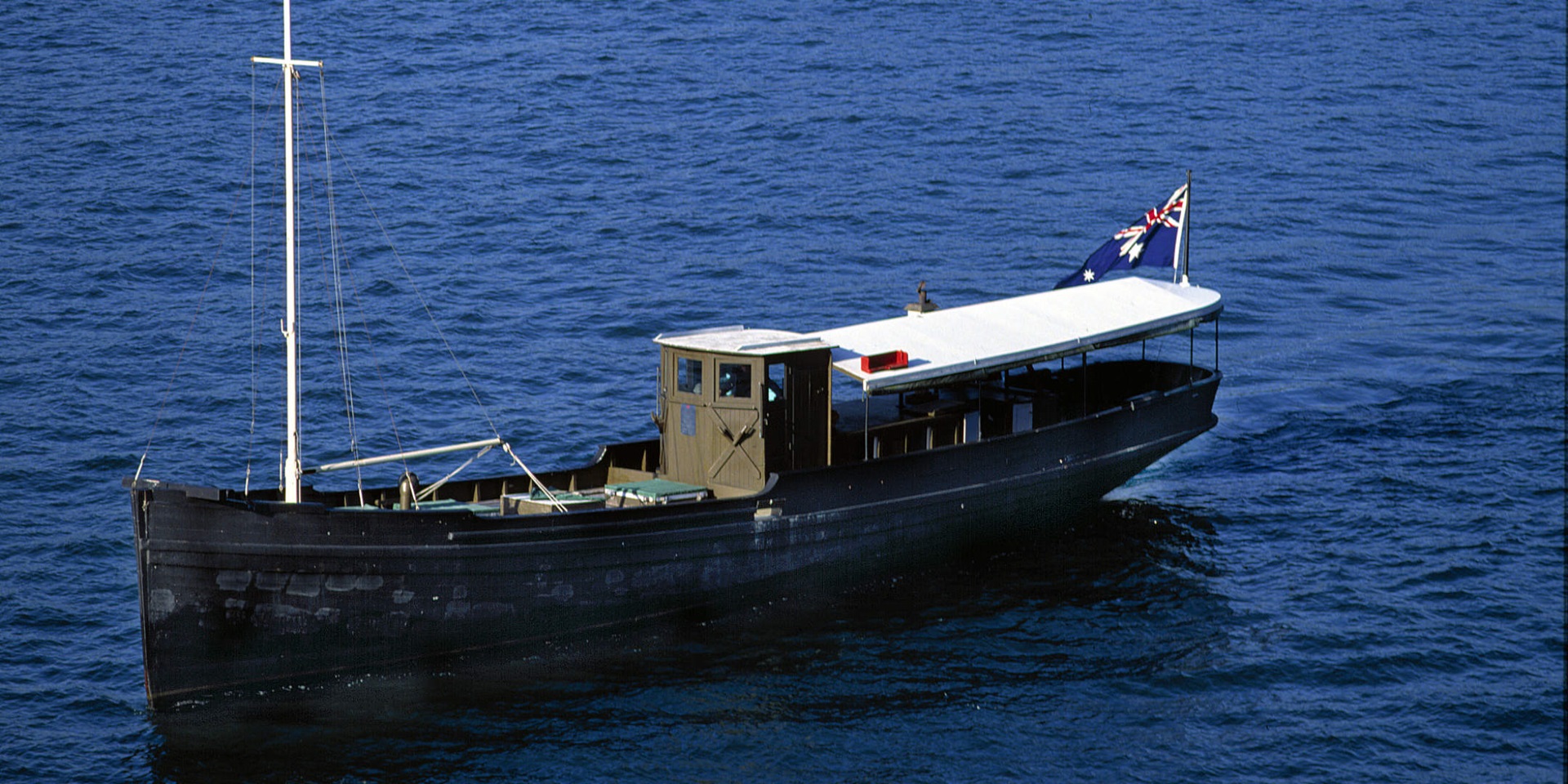Built in 1934 in Japan and originally named Kofuku Maru (Happiness or Good Fortune), Krait collected fish from fishermen and ports around the Rhio Archipelago and took the catch to the Singapore markets.
It took food, water and other supplies to the fishing fleet.
Confined to port early in World War II, the boat was used by Captain Bill Reynolds to evacuate hundreds of civilians to nearby Sumatra and when the Japanese continued to advance he took it to Colombo. It was soon proposed that the vessel be used as part of a covert operation.
Renamed Krait (after a deadly species of snake) its most famous hour came in 1943 when a 14-strong company of British and Australian army and naval personnel set out on a daring commando night raid on shipping in the Singapore Roads.
This year is the 75 anniversary of that daring raid. To commemorate the event, museum fleet staff and curators are returning Krait to its WW2 configuration. The museum is also joining forces with the National Museum of Singapore to produce a wide-screen film about Operation Jaywick and a virtual reality experience that will take people ‘on board’ the historic vessel. A diorama of the night of the commando raid is being installed in Action Stations and a small exhibition is being created to highlight key moments of the operation.
Commando Raider
Codenamed Operation , Jaywick, Krait was disguised as a Japanese fishing boat and successfully sailed to within striking distance of Singapore. Six operatives then deployed three two-man folding canoes to island hop over three nights and finally reach Singapore Harbour where they attached magnetic limpet mines to the hulls of Japanese merchant vessels. Six of the mines exploded damaging some 37,000 tonnes of shipping.
Krait then operated out of Darwin as a coastwatch and intelligence support vessel in Indonesia. Commissioned HMAS Krait in 1944, the vessel witnessed the Japanese surrender at Ambon in September 1945 and after the war was handed to the British Borneo Civil Affairs Unit.
Krait was bought by a British sawmiller for the Borneo timber trade - and renamed Pedang (Sword). In the late 1950s two Australians recognised Krait whilst on a timber-related business trip. A public appeal followed and the Krait Trust Fund was formed to purchase the vessel and return it to Australia - which it did successfully in 1964.
The vessel was operated by the Royal Volunteer Coastal Patrol for patrol, search and rescue, boating courses and school visits. It was transferred to the Australian War Memorial in 1985, but put in the care of the Sydney Maritime Museum ( Now Sydney heritage Fleet) to maintain and display until 1988, when It was loaned to the ANMM who have managed the display, maintenance and restoration of MV Krait since that time.
In the news
Krait has featured in an episode of Australian Story on ABC, which you can watch online. Former Maritime Museum employee, Penny Edwell, featured in the episode and you can read two posts by her about Krait over on our blog:
It was also the subject of an ABC news article: MV Krait: Unassuming fishing boat to be restored and memorialised after crucial role in WWII's Special Operations
Ship specifications
| Length |
13.18 m on deck; 11.55 m waterlin |
| Breadth |
4.45 m |
| Draught |
2.09 m |
| Displacement |
23.44 tonnes |
| Ballast |
3.37 tonnes |
| Sail |
Gaff ketch, area 101.01 m2 with topsail |
Lent by the Australian War Memorial
